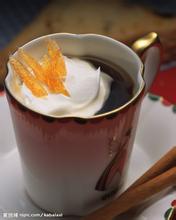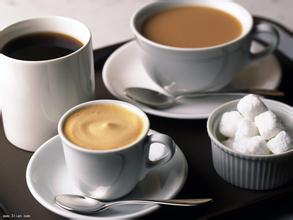Introduction to the balanced and soft flavor of El Salvador boutique coffee
The chaos caused by the civil war affected economic development, but ironically allowed the ancient coffee species to remain. The situation was too chaotic for Salvadoran coffee farmers to catch up with the trend of coffee variety renewal in Central and South America.
El Salvador produces 100% Arabica coffee, of which 68% is Bourbon (Coffea arabica var. Bourbon), 29% Pacas, the rest include Pacamara, Caturra, etc.
Pacas, first discovered in Salvador in 1949, is a natural hybrid of Bourbon and Catula.
Pacamara, an artificially selected variety of pacas and maragogipe (or maragogype), was first bred in 1958 (one said 1954). Pacamara is a rare excellent variety under artificial breeding. Green is better than blue. It perfectly inherits the advantages of the mother plant. It has the excellent taste of pacas and the big size of malagogipe. Pacamara species are thought to be the result of the pursuit of larger Arabica species.
coffee planting
Most are grown by small farmers. Classification of Salvadoran farmers: (1 htct= 105 mu = 10000 square meters)
Small farmer, small producer, area less than 7.0 hect;
Medium farmer, medium producer, area between 7.0-70hect;
Large farmer, large producer, area greater than 70hect.
Farmers use traditional planting methods with almost 100% shade. Coffee production status
"Natural disasters" and "bad luck" are the words that describe the challenges facing El Salvador's coffee industry. Although it has escaped the shadow of war, El Salvador's coffee production still faces challenges from time to time, including: hurricane in 1998; earthquake in 2001; volcanic eruption in 2002; and leaf rust in 2012.
Despite these challenges, El Salvador has maintained a high coffee production, consistently ranking in the top 15 of ICO member countries for total coffee production between 2008 and 2012, according to ICO International Coffee Organization data. In 2013, affected by leaf rust disaster, 70% of farms in China were infected, and the yield dropped sharply by about 40%, ranking down to 16.
El Salvador 08-13 Total coffee production and ranking (unit: 000 bags, 60kg per bag)

Salvadoran coffee accounts for 40 per cent of the country's exports and is picked in November and December and from January to March of the following year. Green bean exports continue almost throughout the year. Coffee is produced in seven of the country's 14 departments, with chalatenango and santa ana in the north-west the most abundant. El Salvador produces 100% Arabica coffee, 68% of which is bourbon, and bourbon coffee is usually grown at altitudes of 1062 - 1972 meters. El Salvador's unique mountainous river plateau terrain provides a suitable environment for the growth of Bourbon coffee. At the same time, El Salvador's suitable temperature and abundant rainfall and fertile soil are also indispensable natural conditions for breeding high-quality coffee beans. Salvadoran coffee, like other typical island beans, is balanced, soft and good in texture
Important Notice :
前街咖啡 FrontStreet Coffee has moved to new addredd:
FrontStreet Coffee Address: 315,Donghua East Road,GuangZhou
Tel:020 38364473
- Prev

Peruvian Coffee planting Environment Peruvian Coffee beans Peruvian Coffee Brand Guangzhou Cafe
Peruvian coffee is grown in a planned way, which has greatly increased coffee production. Its rich acidity and mellow smoothness are its most prominent features. Peruvian coffee has a soft sour taste, medium texture, good taste and aroma, and is an indispensable ingredient in the production of comprehensive coffee. High-quality Peruvian coffee with a strong aroma, smooth, layered and full-bodied
- Next

Cuban Crystal Mountain Coffee introduction to Cuban Crystal Coffee
Crystal Mountain Coffee is very precious. This is mainly for two reasons. The first reason is the economic sanctions imposed by the United States against Cuba and the non-opening up of Cuban imports. The second reason is that at present, Cuban coffee beans are mostly acquired by the French and Japanese markets, especially Japan, so it is difficult to buy coffee beans directly from Cuba. Nevertheless, Cuban coffee is among coffee lovers around the world.
Related
- Detailed explanation of Jadeite planting Land in Panamanian Jadeite Manor introduction to the grading system of Jadeite competitive bidding, Red bid, Green bid and Rose Summer
- Story of Coffee planting in Brenka region of Costa Rica Stonehenge Manor anaerobic heavy honey treatment of flavor mouth
- What's on the barrel of Blue Mountain Coffee beans?
- Can American coffee also pull flowers? How to use hot American style to pull out a good-looking pattern?
- Can you make a cold extract with coffee beans? What is the right proportion for cold-extracted coffee formula?
- Indonesian PWN Gold Mandrine Coffee Origin Features Flavor How to Chong? Mandolin coffee is American.
- A brief introduction to the flavor characteristics of Brazilian yellow bourbon coffee beans
- What is the effect of different water quality on the flavor of cold-extracted coffee? What kind of water is best for brewing coffee?
- Why do you think of Rose Summer whenever you mention Panamanian coffee?
- Introduction to the characteristics of authentic blue mountain coffee bean producing areas? What is the CIB Coffee Authority in Jamaica?

